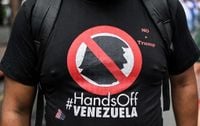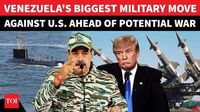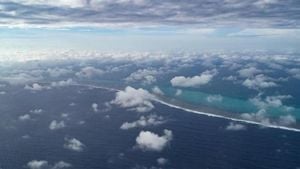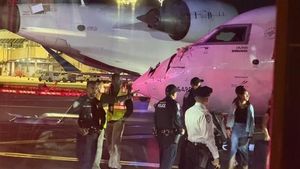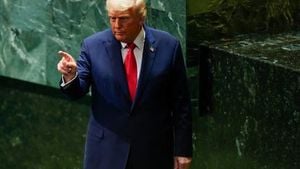On the evening of October 2, 2025, the world watched as tensions between the United States and Venezuela reached a fever pitch. In a televised address, Venezuelan President Nicolás Maduro declared a state of emergency, placing the country’s armed forces on high alert and warning that Caracas was prepared to take extraordinary measures if the United States escalated its military posture in the Caribbean. The dramatic move came after weeks of mounting U.S. military deployments in the region and a series of controversial strikes that have left the international community deeply unsettled.
"We are preparing along three lines: the comprehensive defense of the nation, the active resistance of the people, and the permanent offensive of an entire country," Maduro announced, as reported by multiple outlets, including the BBC and Latin Times. He outlined Venezuela’s readiness to activate constitutional provisions that would allow the mobilization of the armed forces, the nationalization of key industries, and the closure of borders if Washington made any aggressive moves.
The Venezuelan government’s response was swift and sweeping. According to Latin Times and The Nation, Caracas began militarizing infrastructure, deploying air defenses, and activating an astonishing 3.7 million militia members. Submarines and fighter jets armed with anti-ship missiles were repositioned for potential conflict, while military drills with fighter jets and live-fire exercises became a near-daily occurrence. As Vice President Delcy Rodríguez confirmed, the emergency declaration would grant the government sweeping powers to defend national sovereignty.
Meanwhile, the U.S. flexed its own considerable muscle in the Caribbean. The U.S. Marine Corps posted images on its official X account showing Light Armored Vehicles (LAV-25s) conducting maneuvers on a beach in Arroyo, Puerto Rico—less than 600 miles from Caracas. These amphibious vehicles, part of the 22nd Marine Expeditionary Unit attached to the USS Iwo Jima Amphibious Ready Group, are designed for rapid assaults and reconnaissance, signaling a level of readiness that goes far beyond standard counter-narcotics operations. The Pentagon confirmed that three guided-missile destroyers—the USS Jason Dunham, USS Gravely, and USS Stockdale—were operating in the Caribbean, alongside the guided-missile cruiser USS Lake Erie and the littoral combat ship USS Minneapolis-Saint Paul.
The air was no less crowded. Washington deployed ten F-35 stealth fighters to Puerto Rico, officially for missions aimed at interdicting narcotics trafficking networks. President Donald Trump stated that these operations are intended to disrupt “narco-terrorists and other nefarious actors.” The White House has repeatedly accused Maduro of ties to international drug cartels, allegations that Caracas has consistently denied. Yet, as The New York Times and The Nation have reported, the scale and sophistication of the U.S. military buildup suggest that broader strategic aims may be at play.
That suspicion was further fueled by a series of U.S. military strikes in the region. On September 2, 2025, the Trump administration authorized a drone strike against a small boat in international waters off the coast of Venezuela, killing all 11 people on board. President Trump claimed the vessel was transporting illegal narcotics to the United States and justified the attack as an act of self-defense. The administration alleged the boat was tied to the Venezuelan Tren de Aragua gang, but this claim remains unproven and has been hotly disputed by the Venezuelan government. As The Nation pointed out, “Self-defense can be used only to repel an armed attack—drug trafficking cannot be considered, in any world, an armed attack, and it thus posed no imminent threat.”
Legal scholars and international observers have raised alarm bells over the legality of these actions. The U.S. justified the strike by citing the “inability or unwillingness” of regional states to address threats to U.S. persons and interests—a rationale reminiscent of the post-9/11 Global War on Terror, but one that many argue stretches international law to its breaking point. As The Nation observed, “What we are seeing now from the Trump administration is a US empire increasingly willing to dispense with even the perfunctory legal legitimation that past presidents leaned on.”
The strikes did not occur in a vacuum. According to Latin Times, Christopher Sabatini, a senior fellow for Latin America at Chatham House, wrote in a New York Times op-ed that some high-ranking officials in the Trump administration are seeking regime change in Venezuela through these military operations. Sabatini noted that, contrary to official claims, Venezuela is not a major supplier of illicit drugs to the United States, citing Drug Enforcement Administration data. “What some powerful members of the Trump administration want is regime change, and they want it as cheaply as possible,” Sabatini wrote. He suggested that the large U.S. military deployment and strikes on vessels are more about sending a message to Maduro—"Your days are numbered"—than about genuine counter-narcotics efforts.
Despite the saber-rattling, Sabatini and other experts believe a full-scale U.S. invasion of Venezuela remains unlikely. Instead, they argue, the military presence and the threat of further drone strikes may be intended to pressure Maduro’s government to defect or be overthrown from within. Sabatini warned, however, that if the military deployment does not lead to Maduro’s ouster, it risks diverting significant U.S. assets needed elsewhere and could inflame regional opposition. “Countries like Mexico, Brazil, and Colombia would almost certainly go to great lengths to prevent the U.S. military from starting a war on Venezuelan soil,” he cautioned, urging Washington to leverage diplomatic efforts for a democratic transition instead.
The crisis has not gone unnoticed by the Venezuelan people. On August 11, 2025, supporters of President Maduro staged protests in Caracas against U.S. policies, denouncing what they see as foreign intervention and a violation of Venezuelan sovereignty. Maduro himself has repeatedly condemned the U.S. military deployments as provocative and destabilizing, urging Washington to abandon “violent regime change in Venezuela and in all of Latin America.” Despite his calls for negotiation—including a letter offering direct talks with President Trump—Maduro has warned Venezuelans to brace for confrontation.
As the standoff continues, the stakes could not be higher. The situation marks one of the most serious military escalations in the region in recent years, intertwining issues of drug enforcement, regional instability, and great power competition. The world now watches with bated breath, uncertain whether the next move will bring the parties closer to war—or to a desperately needed diplomatic breakthrough.
In the shadow of warships and emergency decrees, the future of Venezuela—and the rules that govern the international order—hang in the balance.
